
Date: September 4, 2019
Location: Lat: 40.39768°, Lon: -68.13232°
Dive Depth Range: 538 - 600 meters (1,766 - 1,970 feet)
Access Dive Summary and ROV Data
Perplexingly shaped geological features within Oceanographer Canyon initially stump our science team. Video courtesy of the NOAA Office of Ocean Exploration and Research, Deep Connections 2019. Download larger version (mp4, 95 MB).
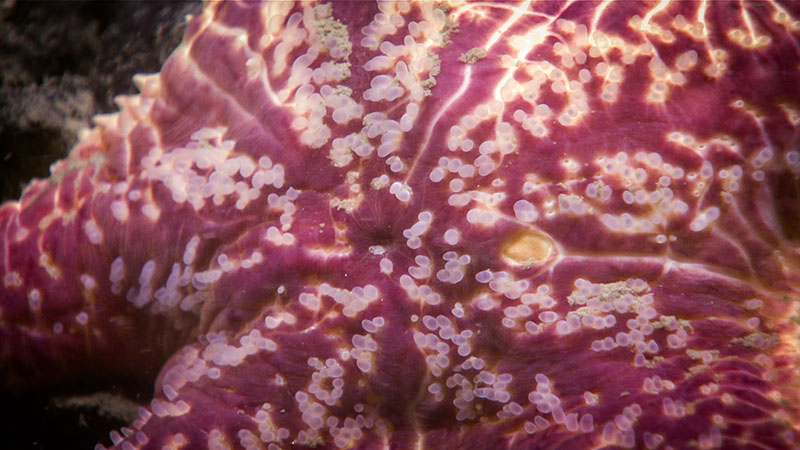
An interesting color morph of the sea star Chondraster grandis. These sea stars, which are usually a rare sight, are particularly abundant in canyons of the Northeast Atlantic. Image courtesy of the NOAA Office of Ocean Exploration and Research, Deep Connections 2019. Download larger version (jpg, 1.5 MB).
Today’s dive explored Oceanographer Canyon, the largest submarine canyon within the Northeast Canyons and Seamounts Marine National Monument and one of the largest off the Northeast U.S. coast. Previous dives within Oceanographer Canyon have documented dense deep-sea coral and sponge communities. This dive explored an area inside the canyon which had not been previously surveyed, and which was predicted to contain highly suitable habitat for deep-sea corals.

Pyramid-like structures on the seafloor of Oceanographer Canyon seen during Dive 07 of the Deep Connections 2019 expedition. Image courtesy of the NOAA Office of Ocean Exploration and Research, Deep Connections 2019. Download larger version (jpg, 880 KB).
The substrate explored during the dive consisted mostly of hemipelagic drape, sand, cobbles and boulders. The current was relatively strong throughout the entire dive, which hindered remotely operated vehicle (ROV) positioning and made for poor visibility. Striped shrimp, monkfish, and shortfin squid were all observed. The area was notable for an abundance of hard substrate, but a scarcity of live deep-sea coral colonies. Dead or dying coral colonies were observed in the canyon axis and the lower walls of the canyon. Intact primnoid corals and encrusting demosponges were observed approximately 50 meters (164 feet) off the floor of the canyon. One sample was collected during the dive, a consolidated clay from a distinctively pyramid-shaped structure. These structures appear to have been formed from a partially dewatered clay layer eroded by canyon currents and debris flows.
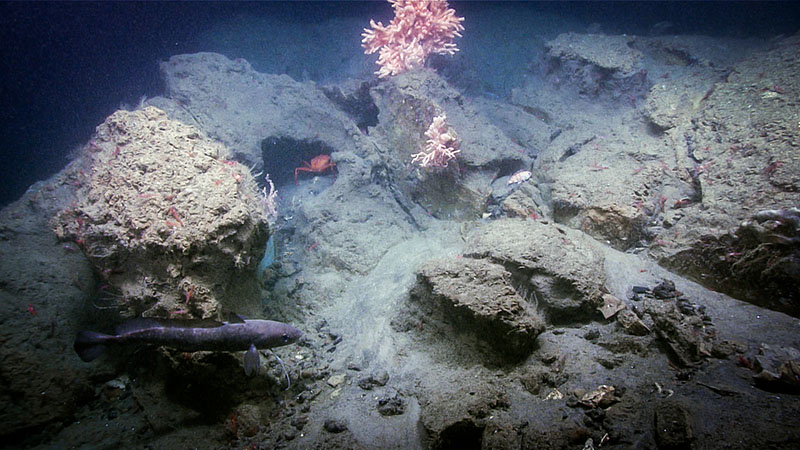
Considerable turbidity was present throughout the dive on Oceanographer Canyon. Some sponges and corals, like these primnoid corals, were observed on the most prominent features seen during the dive. Image courtesy of the NOAA Office of Ocean Exploration and Research, Deep Connections 2019. Download larger version (jpg, 1.6 MB).
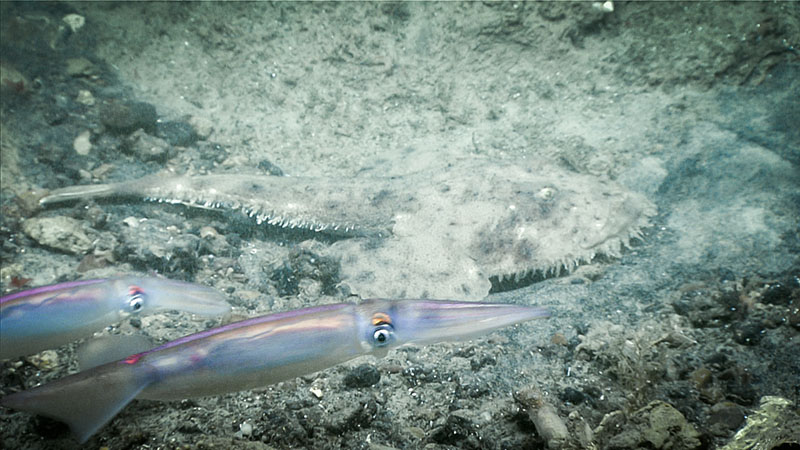
The dominant substrate during Dive 07 of the Deep Connections 2019 expedition was poorly sorted gravel. In this image, shortfin squid and a monkfish are seen resting on the seabed. Image courtesy of the NOAA Office of Ocean Exploration and Research, Deep Connections 2019. Download larger version (jpg, 1.3 MB).
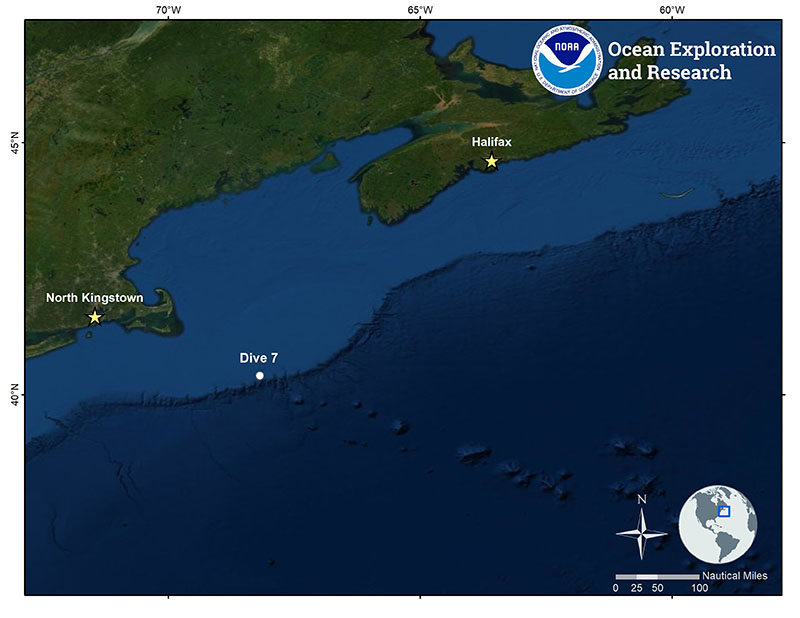
Location of Dive 07 of the Deep Connections 2019 expedition on September 4, 2019. Download larger version (jpg, 1.7 MB).
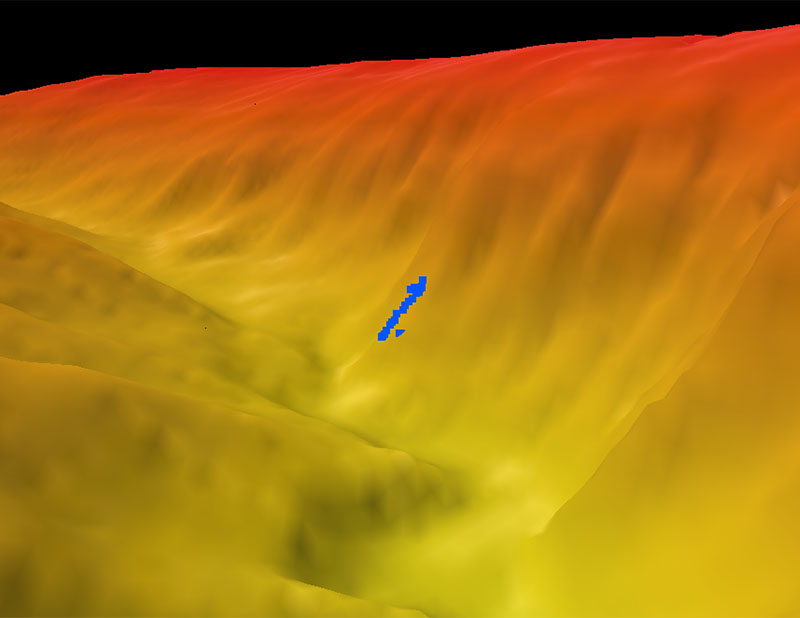
Map showing the dive track of Dive 07 of the Deep Connections 2019 expedition. Scale is water depth in meters. Download larger version (jpg, 320 KB).